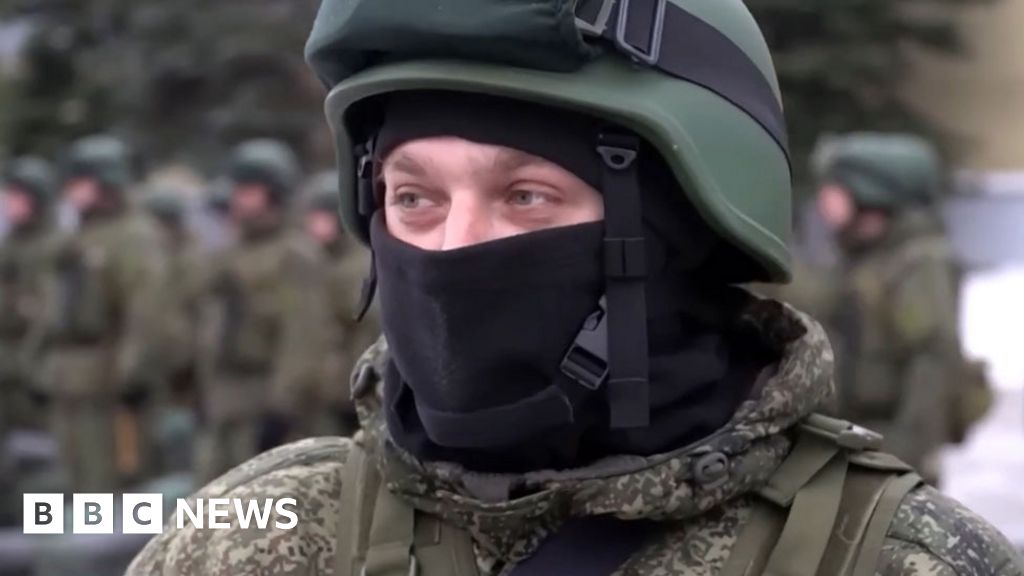
www.bbc.com
The cost of the Ukraine war for one Russian regiment
The decline of the "elite" 331st regiment can be measured in loss to machinery and personnel.
International
Kostroma is not a bad place to go looking for the effects of the Ukraine war on Russia. For this city is home to a celebrated regiment that bears its name and has been in the forefront of all the main battles in the Kremlin's campaign against its neighbours.
The 331st Guards Parachute Regiment, often called the Kostroma Airborne Regiment, has been the subject of investigations by BBC's Newsnight since shortly after last February's invasion. These have revealed the price paid by the regiment and its home community. We had confirmed 39 fatalities by April last year, 62 by late July, and now the toll has reached 94.
Much of the work compiling this list has involved combing social media accounts on V'Kontakte, the Russian equivalent of Facebook, and local media reporting. We can then cross reference this with satellite and Google Street View imagery.
One video discovered on V'Kontakte showed soldiers' graves at a cemetery north-east of Kostroma. The graves shown in the videos match the names of the soldiers we have collated.
The actual number of 331st's dead is probably much higher. Some of the soldiers are from towns outside Kostroma, which makes tracking down information about them much more difficult. Several soldiers have been reported missing - some of these may count among the dead.
When one considers those seriously wounded or taken prisoner, it's reasonable to assume that the Ukraine war has cost the regiment several hundred soldiers.
The loss of life has caused much comment in Kostroma, which lies about 300km north-east of Moscow and has a population of around a quarter of a million. One local website noted last spring that the entire Soviet-Afghan war, lasting nine years, had cost the city 56 soldiers. Heavy losses in Ukraine have given the local authorities a difficult task of political management.
Sergey Sitnikov, Kostroma's Kremlin-appointed governor, has been in the forefront of attempts to convince people that the city's soldiers are being properly supported. Gov Sitnikov's visits to hospitals, barracks, and indeed to the front, have been covered on local TV.
On a visit to the front in December, Gov Sitnikov told viewers that "we need to help [the] guys so they have decent conditions". He had brought with him crowd-funded care packages and commercially sold drones.
Gov Sitnikov is Vladimir Putin's placeman in his home region, so he's hardly a rebel or fearless teller of uncomfortable truths. But his willingness to visit the front and acknowledge shortcomings, even in a coded way, marks an interesting contrast with his boss.
When local TV showed mobilised paratroopers on the 331st's parade ground six months ago, it also carried Gov Sitnikov's rather frank remarks to them: "I'm wishing you good health, success, completion of all tasks… and that you return home alive."
The call-up of paratroopers, part of Russia's wider mobilisation, underlines the degree to which the Ukraine campaign has exhausted the country's professional army, of which the 331st has been a showpiece. In footage of November's parade, 150 conscripts were shown before their dispatch to the front.
The total size of the 331st regiment could be estimated at 1,500-1,700. When it first sent into Ukraine in February 2022, it deployed two battalion groups, giving a total of 1,000-1,200 soldiers. After taking heavy casualties in the failed attempt to reach Kyiv, the regiment was withdrawn and rebuilt in the southern Russian garrison town of Belgorod last summer.
Subsequent action has seen the regiment moving around all the major flashpoints - Izyum in the early summer, Kherson later on, and now back to Donbas. By monitoring the dates given in the death announcements on Kostroma social media, it's possible to work out when (and often where) the unit was used to spearhead assaults, and the lulls when it was removed from the line to lick its wounds. For example, a cluster of deaths in February point to elements of the 331st being engaged in Kreminna.
























































